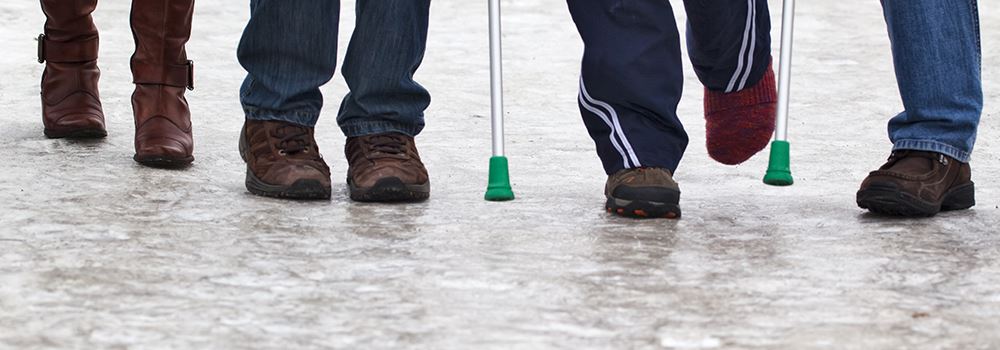
Originally Published: October 25, 2018 5:11 p.m.
We are approaching our winter weather, and from experience our weather can take a toll on more than just our cars and our attitudes. Concrete walks, driveway, steps all take a pounding from the elements and the deicing chemicals that we apply.
Some people find the world of de-icers, ice melters, anti-icers, or basic ice removal compounds somewhat confusing especially with all the claims various manufacturers make regarding these products. We hope our column will help you navigate through the maze of confusion.
What is the difference between a de-icer, ice-melter or an anti-icer you ask?
Anything used to melt the ice is considered to be a deicer or ice-melter. It does not matter what the material composition is or what format it comes in. Ice-melter can be in variety of formats, such as granular, flakes, pellets, pearls, powder or even in a liquid format. Many people assume that the word ice-melter means that it is somehow eco-friendly. This simply is not the case. Rock salt is an ice-melter.
An anti-icer is any product that can be applied to a surface before a storm to help prevent ice build-up from occurring. Anti-icer does not eliminate ice build-up, but rather just delays it enough and forms a slush so it can be removed easier.
What different types of ice-melters are there?
There are many different chemicals that can go into making up a de-icer; however, only a few base compounds are used, due to price and availability. They are: rock salt (sodium chloride), magnesium chloride, calcium chloride, potassium chloride, urea, CMA (calcium magnesium accetate), NAAC (sodium accetate) and liquid glychol. Many products sold today are merely re-packaged commodities of rock salt, natural or artificially colored.
CMA is a salt-free deicing agent made from acetic acid and dolomitic lime. Although this de-icing compound is more expensive than most salts or combination deicers, it is less damaging to the driveway surface and plants, making it suitable for use in environmentally sensitive areas.
What type of ice-melter should be used on new concrete?
None. No ice-melter should be used on newly poured concrete, as concrete requires a certain length of time to cure. This amount of time can vary depending on the type of concrete. It is best not to use ice-melter on new or unsealed concrete less than 12 months old, exposed aggregate, brick, or pre-cast steps. Applying ice-melter to damaged, cracked or chipped concrete may result in further damage due to the thaw and re-freeze cycles.
Some ice-melters containing ammonium nitrate or ammonium sulphate additives will rapidly disintegrate concrete and therefore should not be used.
Why should people avoid using calcium chloride ice-melters?
Besides the fact that calcium chloride causes damage to concrete by having a very short thaw/freeze cycle, and causes discoloration of concretep; calcium chloride inherently attracts moisture – is hygroscopic -- and therefore has a limited shelf life. Further, calcium chloride leaves behind an oily residue, which is easily tracked into buildings, soiling and damaging carpets and floorings and presenting a serious slip/fall hazard. Calcium chloride is harmful to the environment -- damaging plant life, soil and the water system. Also, people must be very careful when using calcium chloride as it caustic and will burn skin causing an irritation. It should not be used around pets.
Why should people avoid using rock salt or sodium chloride?
Rock salt has an enormously negative effect on the environment as it is toxic to vegetation and damaging to soil. Rock salt or sodium chloride is not only harmful to plant life but also the soil that sustains life.
By far the most risk of damage to your concrete during the winter months is attributed to the freeze/thaw cycle. This is the buildup of water (melted ice) being absorbed into porous concrete, which then freezes and expands. This expansion within the concrete causes pressure to build up, and eventually this build up will exceed the limit that the concrete was built to withstand and when the pressure becomes too much for the concrete to withstand, scaling generally occurs.
The freeze/thaw cycle is a natural process and there is no way of eliminating it. However, to reduce the damage caused by this cycle, it is strongly recommended that after applying the ice melt and when the ice turns to slush, that the slush be removed from the pavement, sidewalk or driveway to reduce the amount of water that may penetrate the concrete, thus reducing the pressure build-up.
Using an ice melt that contains calcium chloride tends to re-freeze more quickly compared to using ice melt containing potassium chloride. By using potassium chloride, you extend the time available for more melted ice (water) to drain off your concrete or evaporate, resulting in less water being absorbed by the concrete.